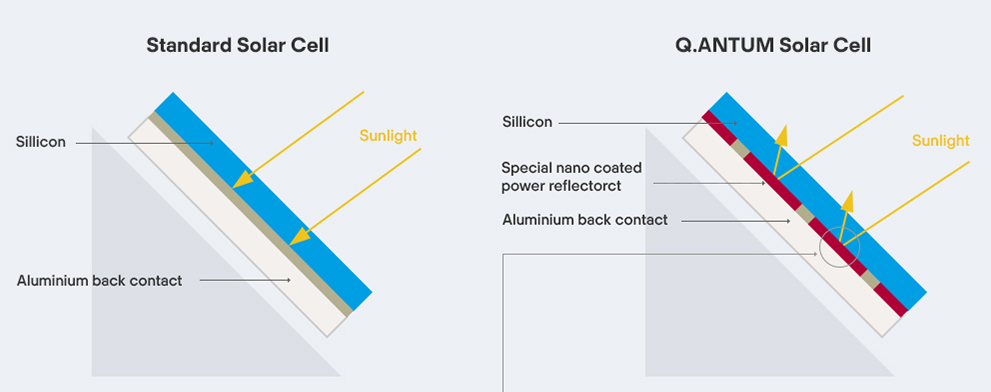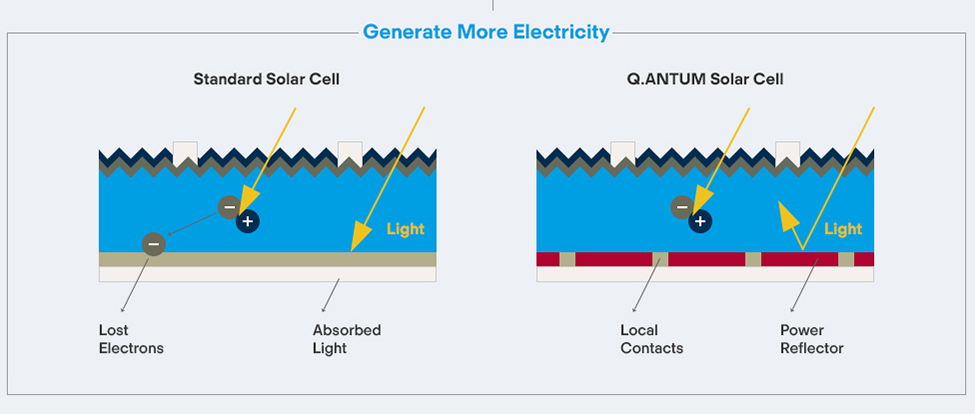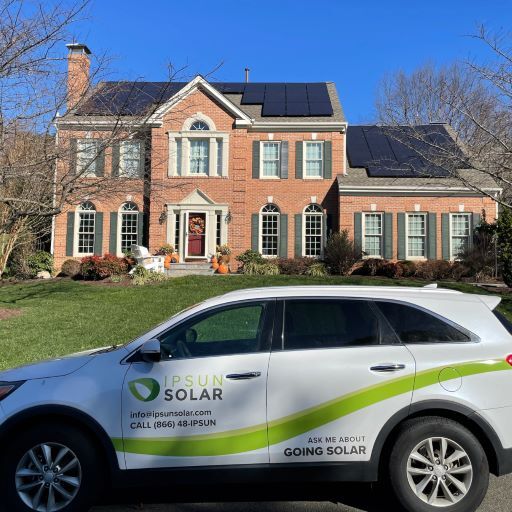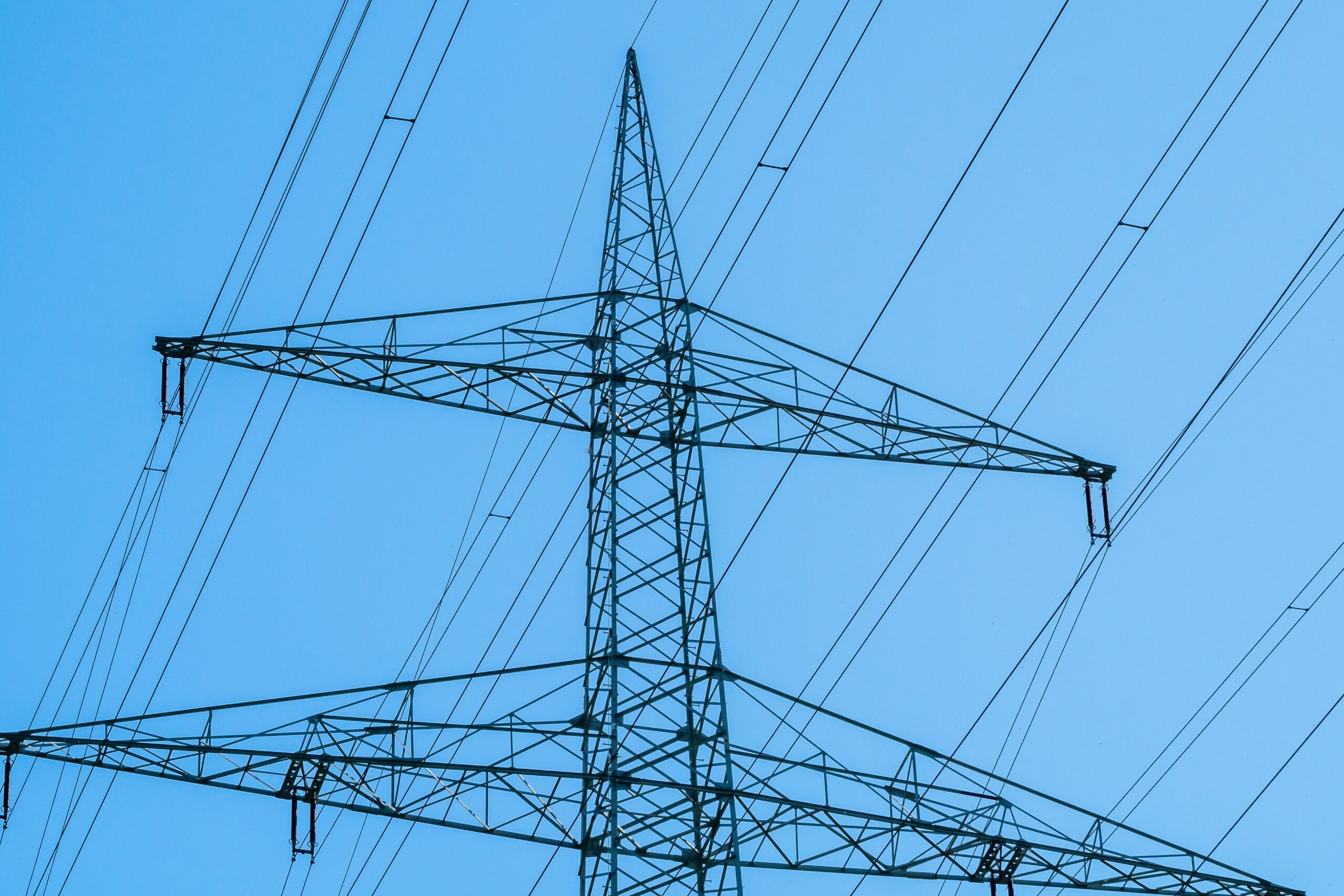Q Cells 405-watt modules provide great value for residential projects because there’s more production power per square inch, giving your roof space more potential than ever.
Choosing the right panel is an important decision—after all, they’ll be on your roof for many decades to come. Q Cells panels can give you the confidence that comes from greater efficiency, performance, and savings through the lifetime of your solar system.
Here are a few important highlights to think about when you’re considering Q Cells panels for your solar project:
Q Cells Assembly Plant in Dalton GA
Q CELLS is creating jobs, strengthening the local economy, and assembling high-performance solar panels in America. The 300,000 square foot plant has created over 650 jobs for people in the Dalton GA community. Learn more about the Q Cells factory here:
Q.ANTUM PERC Technology
Q CELLS’ proprietary Q.ANTUM Technology has been a game-changer in terms of raising standards in module performance and efficiency throughout the solar industry. It is a stepped-up type of Passivated Emitter and Rear Cell (PERC) technology, which means that the back of the panel is also able to capture light and create energy. This helps your panels be as efficient as possible even in low light or on high heat days.
The rear surfaces of Q.ANTUM solar cells are treated with a special nano coating that is similar to a typical household mirror. Rays of sunlight that would otherwise go to waste are reflected back through the cell to generate more electricity.
Laser-fired contacts complement the nano coating to enhance the module’s electrical properties, further increasing its efficiency. Q.ANTUM is the most mature PERC technology, and Q CELLS was the first solar company to use the technology.
What exactly are PERC solar cells?
Basically, a PERC solar cell is simply a more efficient solar cell, meaning that solar panels built with PERC cells can convert sunlight into usable electricity more easily. PERC technology boosts efficiency through the addition of a layer to the back of a traditional solar cell, which improves the cell’s production.
How are PERC solar cells different from standard solar cells?
A PERC solar cell is not much different in construction from a typical photovoltaic solar cell. Both types of solar technology use silicon wafers to generate a flow of electrons using incoming solar radiation, and the overall construction of the cell types is very similar. The main difference between PERC cells and typical monocrystalline photovoltaic cells is the integration of a back surface passivation layer, which is a layer of material on the back of the cells that boost cell efficiency. The back surface layer is able to absorb extra light, thus using more of the available electrons to make energy.


The addition of a back surface passivation layer reduces “electron recombination” in the solar cell. Simply put, electron recombination is the tendency of electrons to recombine, which causes a blockage in the free movement of electrons through the solar cell. This inhibition of free electron movement leads to less-than-optimal cell efficiencies. In a PERC solar cell, electron recombination is reduced in order to bump up efficiency.
Another benefit from a PERC solar cell is the reflection of certain wavelengths of light. A silicon wafer in a solar cell can only absorb light in wavelengths up to 1180 nanometers (nm), and higher-wavelength light waves pass through the silicon and are absorbed by the solar panel’s metal back sheet, creating heat. When solar cells are heated, they operate at lower efficiencies. The back surface passivation layer in PERC solar cells is specially designed to reflect light with a wavelength above 1180 nm, reducing the heat energy in the solar cell and consequently increasing efficiency.
Zero Gap Technology
Q.ANTUM DUO Z also features ‘Zero-Gap’ Technology, which means gaps between the cells are closed to ensure a more effective use of the module area. By reducing the space between the cells, module efficiency is increased in relative terms by 4%, delivering an overall module efficiency of up to 21.1%.

Your system will stand up to tough weather
Q Cells testing ensures outstanding durability and world-class performance even in the harshest conditions: strong wind, heavy snow loads, salt stress, aridity, high temperatures, or humidity. Q cells modules are certified for wind loads up to 2400 Pa. (Pascal) and high snow at 5400 Pa. That’s the equivalent of almost 113 pounds per square foot of snow.
Low Light Induced Degradation and Peace of Mind with a 25-year Warranty
Q.PEAK DUO ML-G10+ and Q.PEAK DUO BLK ML-G10+ are backed by a 25-year product and performance warranty that guarantees at least 86% of the initial power after 25 years. Q CELLS yield security program minimizes the degradation process.
- 2% first year maximum degradation allowance
- 0.5% annual maximum degradation allowance
Reach out to us today!
Want to learn more? Get in touch to talk about all the panel options and technicalities with our solar consultants—we love nerding out about PERC Technology with you!




